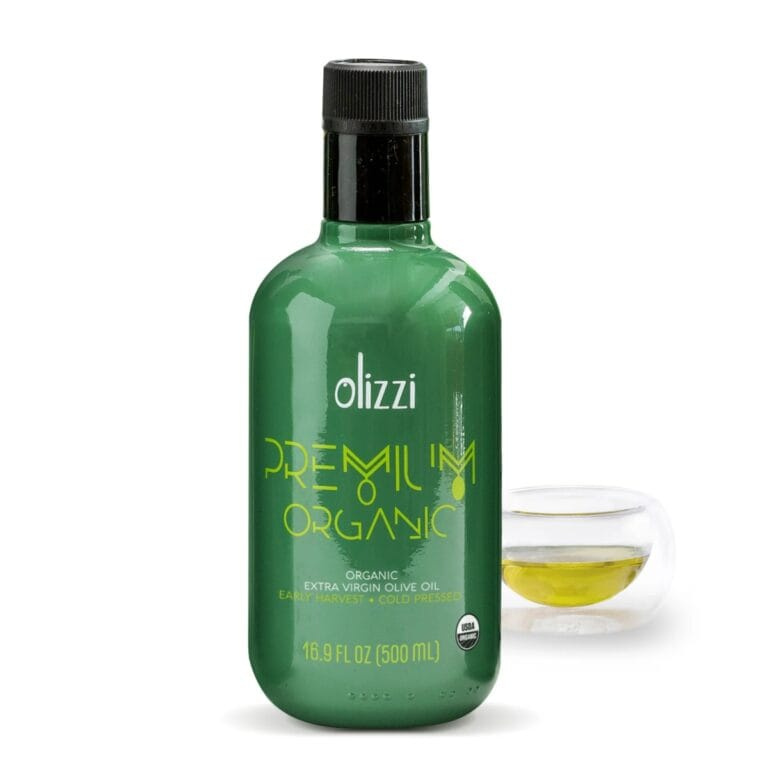Olive Oil Acidity: What it really means and why It matters
When shopping for olive oil, you might have noticed the term “acidity” on the label. But what does it actually mean? Many people mistakenly think that it refers to the taste or pH level of the oil, but in reality, olive oil acidity is a crucial indicator of quality and production methods. In this article, we’ll break down what olive oil acidity is, why it matters, and how it affects the oil you use in your kitchen.
What is olive oil acidity?
Olive oil acidity is a measure of the free fatty acid (FFA) content in the oil, expressed as a percentage of oleic acid. It indicates the breakdown of triglycerides into free fatty acids due to enzymatic activity or poor handling of olives before extraction. The lower the acidity, the higher the quality of the oil.
For example, extra virgin olive oil (EVOO) must have an acidity level of no more than 0.8%, while virgin olive oil can have an acidity of up to 2% (What Is the difference between Virgin Olive Oil and Extra Virgin Olive Oil?). Anything above these limits is considered lower quality and may be refined or used for industrial purposes.
Why is olive oil acidity important?
The acidity of olive oil is a key quality parameter because it reflects how carefully the olives were harvested, stored, and processed. Here’s why it matters:
- Quality Indicator: Lower acidity usually means better quality, as it suggests the olives were fresh and properly handled before extraction.
- Shelf Life: Oils with higher acidity tend to degrade faster, leading to rancidity and loss of flavor.
- Health Benefits: Lower acidity oils typically retain more antioxidants and beneficial polyphenols, which contribute to heart health and anti-inflammatory properties.
- Cooking Performance: While acidity itself doesn’t affect the oil’s smoke point, lower-acidity oils are generally more stable and better suited for raw consumption and light cooking.
Does acidity affect the taste of olive oil?
Many people assume that higher acidity makes an olive oil taste sour or bitter, but this is not the case. Acidity is a chemical property that you cannot detect through taste or smell. The flavor of olive oil is influenced by the type of olives used, harvesting methods, and processing conditions rather than its acidity level.
How is olive oil acidity measured?
Acidity is measured through laboratory analysis rather than sensory evaluation. The test determines the percentage of free fatty acids in relation to oleic acid. Since this measurement requires specialized equipment, consumers cannot determine acidity levels just by tasting or observing the oil.
Factors that affect olive oil acidity
Several factors contribute to the acidity level of olive oil, including:
- Olive Quality: Healthy, freshly picked olives yield lower-acidity oil, whereas damaged or overripe olives result in higher acidity. (Know the most popular olive varieties)
- Harvesting and Storage: Delayed processing or improper storage of olives before pressing can lead to fermentation and increased acidity.
- Extraction Methods: Modern cold-pressed methods produce lower-acidity oils, whereas traditional or poor extraction techniques can increase acidity.
- Contamination: Exposure to air, heat, and light can cause the oil to break down over time, raising its acidity level.
Choosing the right olive oil
When selecting olive oil, focus on these key indicators of quality:
- Acidity Level: Look for extra virgin olive oil with acidity below 0.8% for the best quality.
- Harvest Date: Freshness matters, so choose oils with a recent harvest date.
- Storage Conditions: Opt for oils stored in dark glass bottles to protect against oxidation.
- Trusted Brands: Reputable producers are more likely to provide high-quality, low-acidity oils.
Where to find low-acidity olive oil
At our store, we offer a carefully selected range of premium olive oils with very low acidity. On each product page, we indicate the acidity level when available on the bottle, ensuring you can make an informed decision. Our oils are sourced from top-quality producers, guaranteeing exceptional taste and freshness for the UAE market.
Understanding olive oil acidity can help you make informed choices when purchasing and using olive oil. While it doesn’t directly affect taste, it serves as an essential indicator of quality, freshness, and health benefits. Always opt for low-acidity, extra virgin olive oil for the best experience in both flavor and nutrition.
By knowing what to look for, you can ensure you’re getting the highest quality olive oil for your culinary needs!


































Add comment